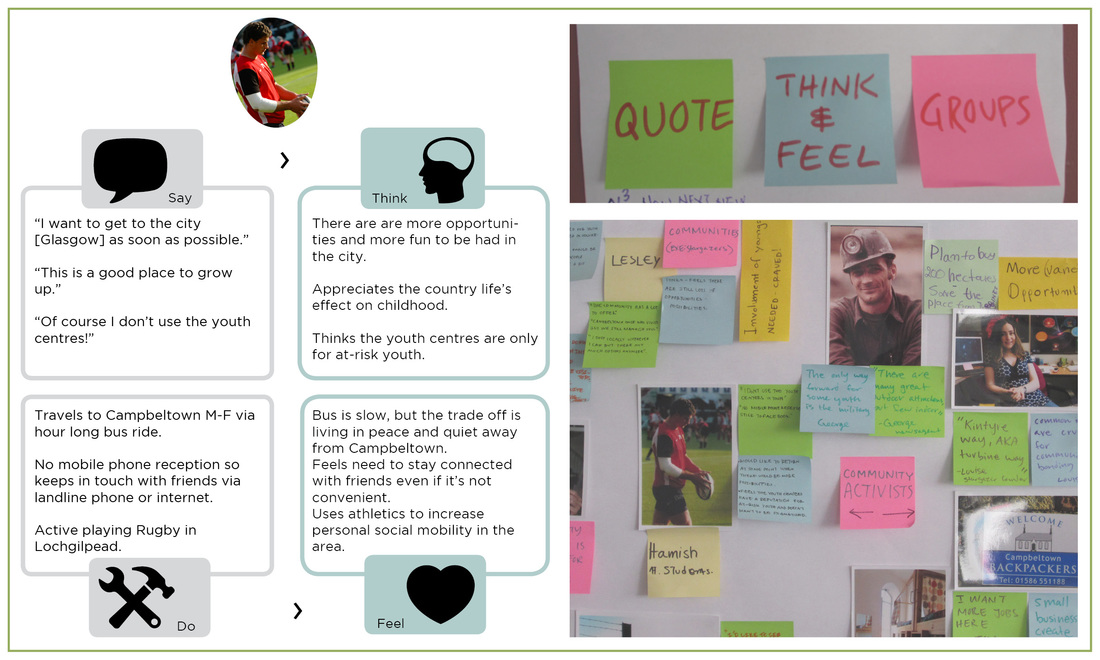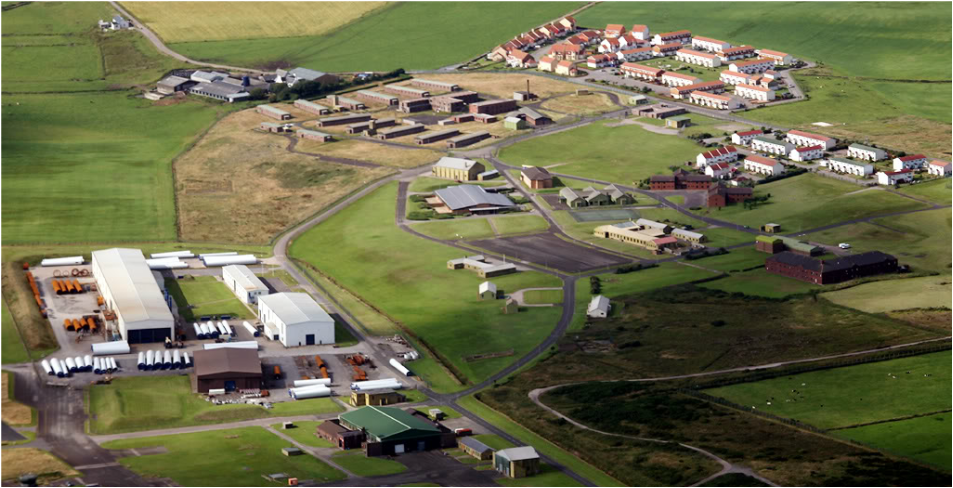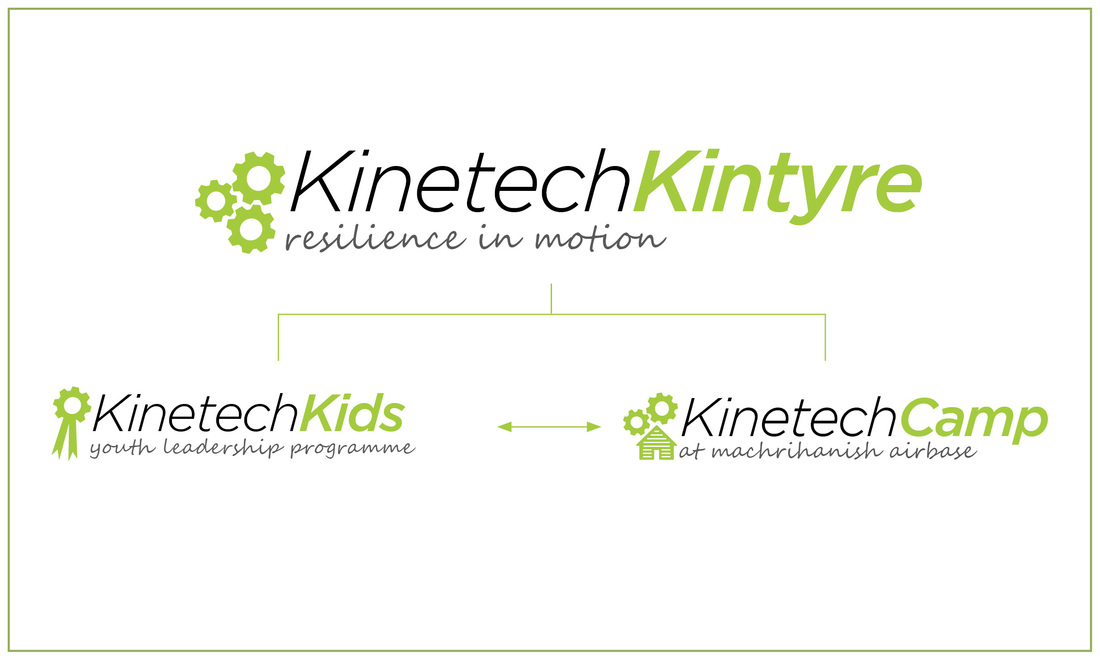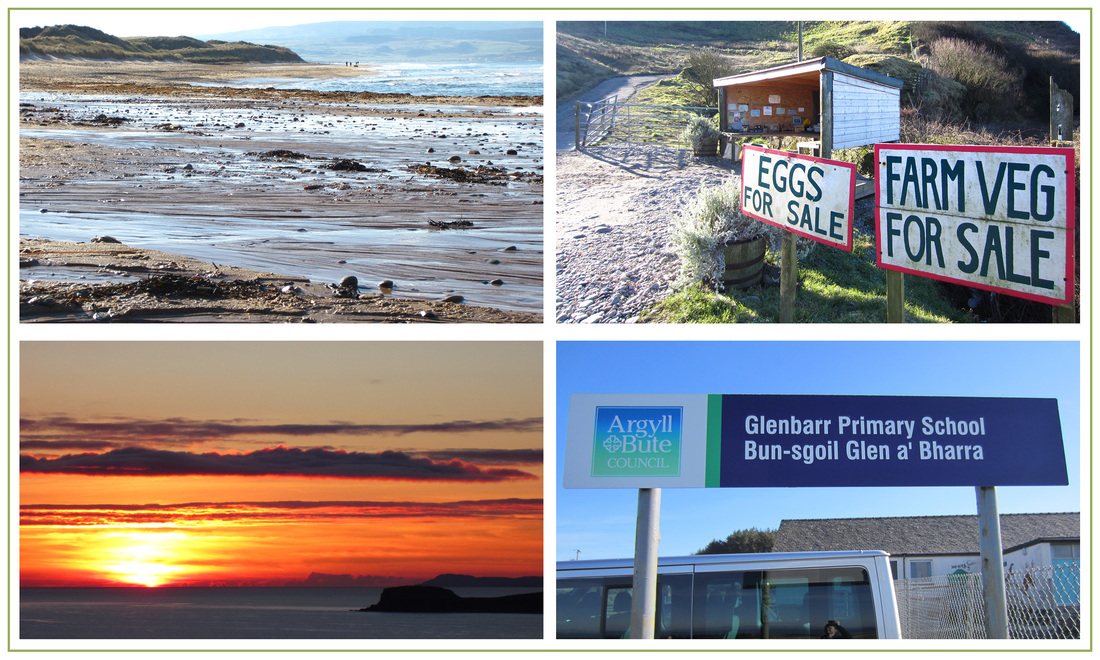People, Place and Possibility:
Future Living on Scotland's Remote West Coast
Summary: A recent survey found that "40% of 15-to 30-year-olds living in Scotland's remote areas were 'committed' to leaving the area." Basically, this implies that the rural infrastructure of the past no longer fully supports the way people live their lives, so they move away.
At the time of this project, the Scottish government was outlining a plan to bring broadband internet to these remote areas for the first time, in hopes that it will create more flexible working and living options. As graduate students of design research in Scotland, my class was asked to spend a week in one of these remote areas.
Task: Conduct primary and secondary research and then develop a hypothetical service design that could give residents more options for rural living the future.
My role: researcher, service designer, communication designer.
Future Living on Scotland's Remote West Coast
Summary: A recent survey found that "40% of 15-to 30-year-olds living in Scotland's remote areas were 'committed' to leaving the area." Basically, this implies that the rural infrastructure of the past no longer fully supports the way people live their lives, so they move away.
At the time of this project, the Scottish government was outlining a plan to bring broadband internet to these remote areas for the first time, in hopes that it will create more flexible working and living options. As graduate students of design research in Scotland, my class was asked to spend a week in one of these remote areas.
Task: Conduct primary and secondary research and then develop a hypothetical service design that could give residents more options for rural living the future.
My role: researcher, service designer, communication designer.
Project location: Mull of Kintyre, Scotland
Project slides:

2. ETHNOGRAPHY: I spent a week in Kintyre conducting on site ethnographic research and interviews. I used this primary research to create a map of stakeholders. The stakeholders provided me with many insights about what it means to live in an isolated place in today's world. A key discovery I made during this time were the town council's plan to transform the area into a hub of renewable energy by expanding a wind turbine factory to increase jobs. I learned that although it would supply factory jobs, there would still be a need to import labor for skilled positions such as engineers. This fact would become a major context for my service design concept.

3. RESEARCH METHODS: During a previous research project, I found that some particularly eager interview participants contacted me a few days later with additional input via email. For this project, at the end of each interview I gave the participant a pre-stamped "postcard probe." The postcards had simple questions written on the back. The response rate was high. I think everyone enjoyed being asked to send a free postcard. While visiting a local primary school I had the idea to distribute the postcards so the children could draw their responses. To accompany the postcards, I had badges with Scots phrases made as inexpensive, yet unique thank-you gifts. People loved them!

4. RESEARCH THEMES: Since I recorded my interviews using an audio recorder, I was able to re-listen to them and note common themes among the participants. The theme groupings helped me understand what is important to: all, most, and only some residents of Kintyre. As you can see, economic identity was huge, as many residents cherished the memories of their once quaint farming town, and were nervous about how a change in industry might have a negative impact.

5. ANALYZING QUALITATIVE DATA: Using the themes as a starting point, I began analyzing the qualitative data (observations). One tool I used was "Say, Think, Do, Feel." Say: interviews/conversations with a stakeholder. Think: analyzing what the stakeholder is saying based on context. Do: observations of stakeholder actions (recorded on a notepad). Feel: Analyzing why they take those actions.

8. FUTURE SCENARIO: I created a vision of Kintyre in the near future based on a combination of primary and secondary research findings. This future vision of Kintyre emphasizes the growing renewable energy activity in the area, as well as increased tourism from a planned hiking trail and charter flights to larger cities. I then started to think about services that could either improve or exist within this future scenario.

9: EUREKA MOMENT: During my initial research, I became aware of a recent community buyout of a local former airbase (full of empty hangars, offices, and barracks). The plans were to redevelop it into a "green energy center." I hadn't given this much thought as far as a service design opportunity until I started to think about alternative ways to utilize the space. It became clear that with the lack of local high skilled labor (as mentioned in slide #2), the airbase facilities could be an ideal location to prepare young people for future careers in science and technology. But wait! How can you get young people interested in pursuing such careers? This question served as the foundation of my service design concept.
Read more about the airbase here.

10. SERVICE OPPORTUNITIES: Now that I knew the goal of my service concept would be get young people interested in science and technology, I began to map ways of reaching that goal. The three main opportunity areas I identified for the service were: education, the environment, and entrepreneurship. After coming up with short lists of ideas, I researched similar services around the world (competitor analysis).

12. SERVICE DESIGN CONCEPT SUMMARY: A non-profit service that runs a science and technology camp. The camp trains and employs local youth (ages 16 and up) as leaders. The camp helps both the leaders and the campers (ages 7 and up) to prepare for future careers in the local, growing renewable energy industry.

13. VISUALIZING THE SERVICE: The first step in visualizing a service is to figure out "who does: what, when and where" (you should already know the why). I recommend first visualizing organically (as seen above), rather than trying to force a service into a grid-blueprint (which can come later). Using this method I figured out who would run the service, who would benefit from it and how it would be economically viable.

15. TOUCHPOINTS STORYBOARD: In this storyboard, you can see how a local young person becomes engaged in the service to become a camp leader. First she sees a job that pays (rare for young people in the area) and connects with the program admin. The program admin sets her up for success by connecting her with a local mentor. Soon she will start learning how to become a camp leader, by first learning the camp curriculum (following the "learning by teaching" theory).

17. CONCLUSION: I was able to use my scenario and personas to successfully illustrate how the implementation of the service (science and tech camp) could have a lasting effect on the local community and encourage future young professionals to stay in the area. I submitted copies of my findings and designs to the local town council, who were quite interested in the project.








